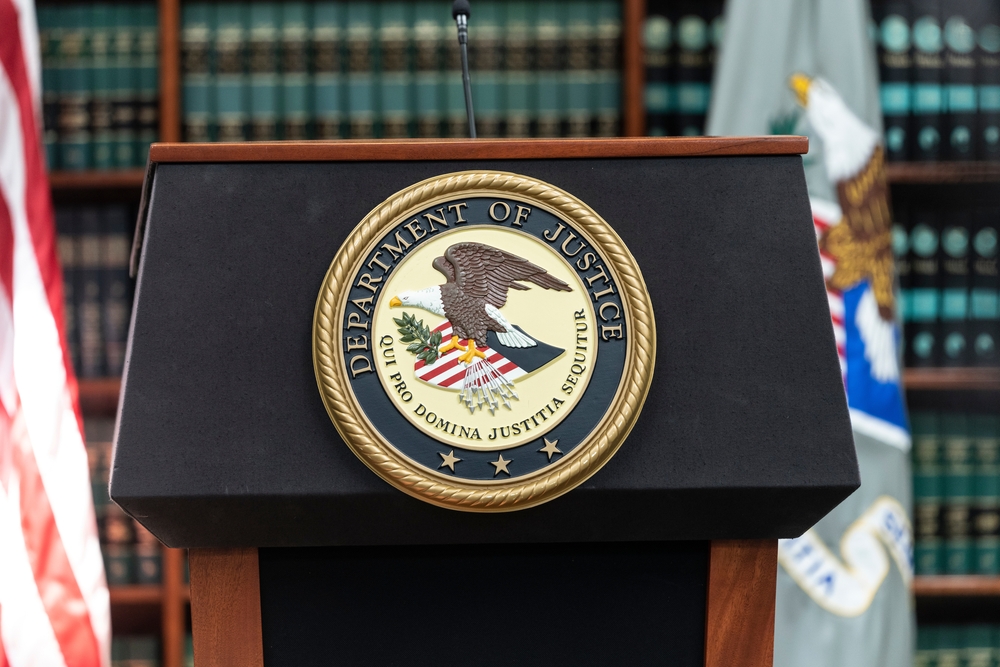Ross Parker was chief of the criminal division in the U.S. Attorney’s Office in Detroit for 8 years and worked as an AUSA for 28 in that office.

Thirty years ago this week, a young Chinese-American man, Vincent Chin, was bludgeoned to death by a man wielding a baseball bat, only a few steps away from a strip club where he and his friends had been celebrating his bachelor’s party.
The crime and its state and federal prosecutions raise the question of whether the case’s anomalous circumstances detract from its impact on American history, the criminal justice system and civil rights for Asian Americans. I became familiar with the case as a resident of the area and as a prosecutor at the U.S. Attorney’s Office in Detroit.
It all began at the tawdry Fancy Pants Lounge in Highland Park, Michigan. Across the stage from Chin and his friends, sat Ronald Ebens and his step-son Michael Nitz doing what men do in such places.
Ebens was a popular supervisor at the nearby Chrysler plant in 1982. It was a tough time for American auto companies and their employees as Japanese companies made steady inroads into the market. Anti-Asian sentiment was common around Detroit. Chin was an outgoing and lively guy who had a wide circle of friends. His parents had emigrated from China to the United States in the 1940s to escape the harsh realities of life in Communist China.
Fueled by alcohol and senseless machismo on both sides, a shouting match ensued between the groups. The accurate content of the argument was both disputed and was soon lost in the fog of time. Chin’s friends later claimed that Ebens made racial remarks, “It’s because of you little mother-fuckers that we’re out of work.” Ebens and Nitz denied the statement and asserted that it was Chin who escalated the trash-talking by hitting Ebens with a chair and then calling Ebens a “chickenshit.”

The dispute spilled out into the parking lot and then across the street near a McDonalds restaurant. As two off-duty policeman watched, Ebens chased Chin onto Woodward Avenue and then struck him on the head several times with a baseball bat he had grabbed from the trunk of his car.
According to a friend, Chin’s last words were, “It isn’t fair…” The veracity of even this, later to be, iconic dying declaration is in doubt since experts later testified that the injury to the brain was so severe that speech would have been impossible. Whether true or not, the words would become a battle cry for Asian-Americans across the country.
Four days later, Vincent Chin died on his mother’s birthday. On the day after the wedding had been scheduled, the guests instead attended his funeral.
The state prosecution, Eben and Nitz’s nolo contendere pleas to manslaughter, and the subsequent sentences of only probation and a fine, were not great moments in Michigan justice.
But sadly, neither did they deviate substantially from the routine in the violent Motor City and its imperfect criminal justice system at the time. Anyone interested in exploring the facts and evidence, from the perspective of both the defense and the prosecution, can read my article in The Court Legacy, Volume XIV, Number 4 (November 2007) or other accounts such as the Academy Award-nominated documentary, Who Killed Vincent Chin? by Rene Tajima and Christine Choy (Filmmakers Library 1989).
In his op-ed piece in the New York Times a few days ago, Frank Wu, Dean of University of California Hastings School of Law, wrote in moving terms about the legacy of Vincent Chin and the response by those who took up the cause of his death and awakened the consciousness of a generation of Asian-Americans as well as the public recognition of their civil rights.
After thirty years, I continue to believe that the Chin case is one of those anomalies. Four levels at the U. S. Attorney’s Office, including me I should disclose, concluded that the evidence of a racial motivation for the homicide was insufficient. Without such proof, there could have been no federal jurisdiction for a civil rights violation. U. S. Attorney Len Gilman recognized the injustice of the state criminal result but declined prosecution.
However, under the glare of publicity, the effective campaign of the American Citizens for Justice, and the influence of nine Congressmen who had sizeable numbers of Asian-American voters, the Justice Department countermanded the U. S. Attorney’s Office decision and sought and received a criminal indictment from the Detroit federal grand jury.
The tortured, four-year history of the federal case supports Gilman’s conclusion. Nitz was acquitted in the first trial, the Court of Appeals reversed Ebens’ conviction, and he was acquitted after venue in the case was transferred to Cincinnati for the re-trial.
This ultimate result, as it bears on whether Vincent Chin’s death was a tragic example of racial bigotry or the tragic result of a stupid bar fight, is remembered by few, but it does not diminish the importance of the case in transforming Asian-Americans from the “silent, model” minority to people who demanded their rights under the Constitution.
A single case did not, of course, reverse two centuries of bigotry. The oppressive importation of Chinese laborers, like Vincent Chin’s grandfather, to build the nation’s railroads, the involuntary detention of 120,000 loyal Japanese-Americans into internment camps during World War II, and countless other public and private acts of discrimination remain as stains on American history.
But the importance of the case in mobilizing Asian-Americans remains as true and real today as if the perpetrator had clearly and indisputably announced a racial purpose to his crime rather than engaged in a drunken bar fight.
Moreover, there is clear evidence that the case contributed significantly to reforms in the criminal justice system nationally as well as in Michigan. These include prosecutor participation at the sentencing stage, the recognition and mandate of victim-witness rights, and restrictions on prosecution policies for plea-bargaining.
Those of us who have Asian-American family members whose rights and opportunities are near and dear, as well as the American public who have benefited so greatly from the many contributions of Asian-Americans to American history, can only celebrate the legacy of the Chin case and not be overly troubled by its messy facts.





